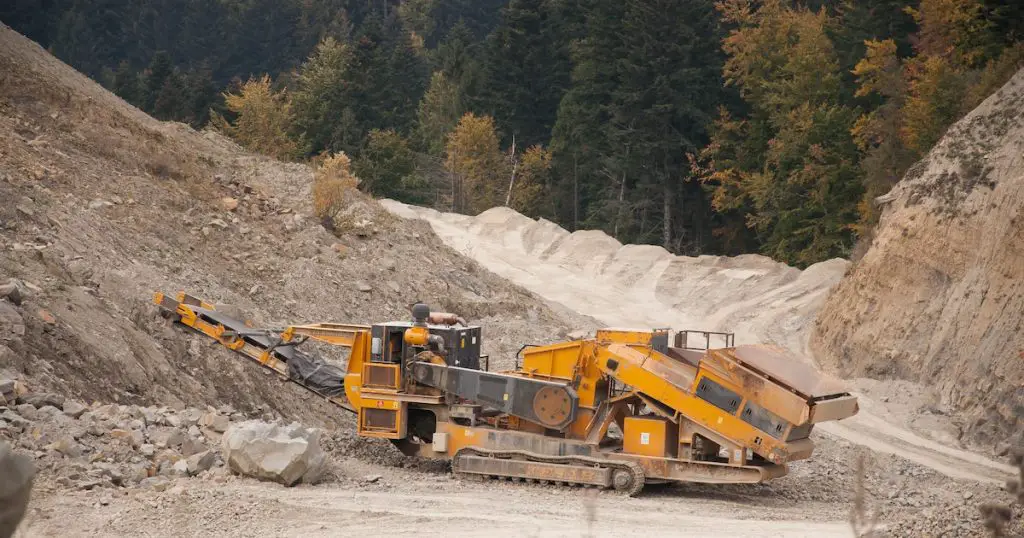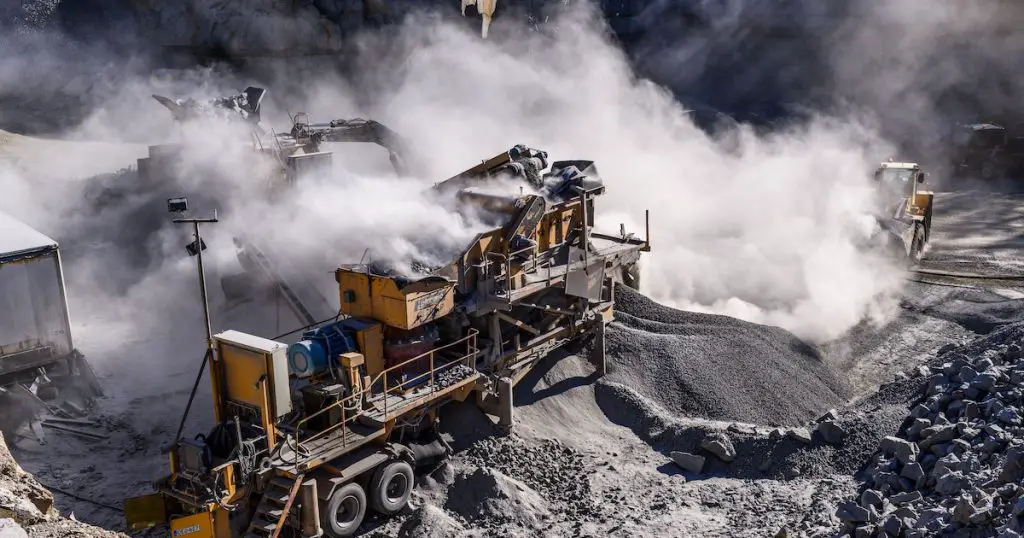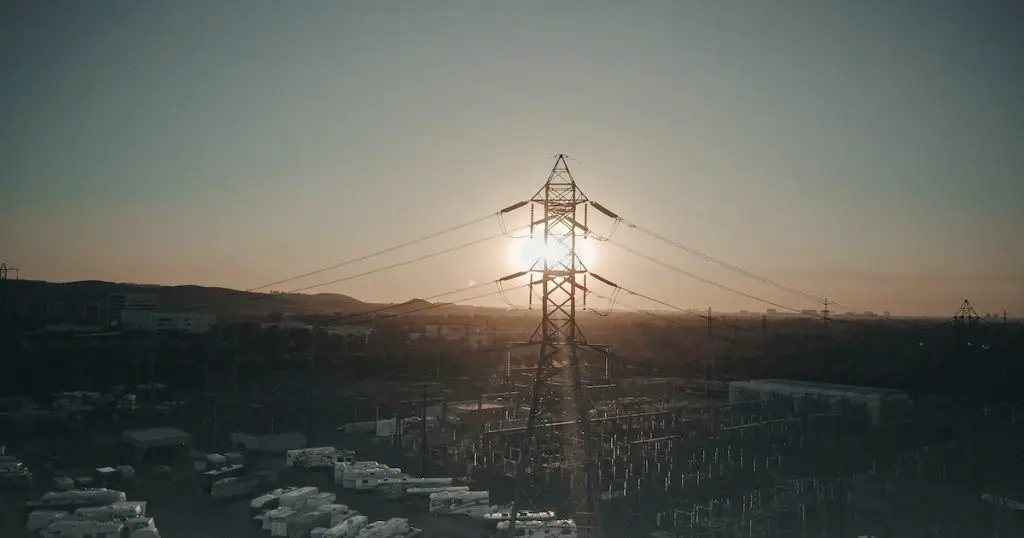Prescott, nestled amidst the breathtaking landscapes of Arizona, has always been a beacon of historical and economic significance. The very pulse of this picturesque city reverberates with stories of the mining industry.

In delving into Prescott’s role in Arizona’s mining industry economy, we uncover a rich tapestry of geology, history, and culture. This connection paints a vivid picture of how Prescott transformed Arizona’s landscape, both physically and economically.
The Geological Importance
Set amidst unique geological formations, Prescott is naturally endowed with a plethora of mineral resources. These resources have not only shaped its terrain but also its socioeconomic trajectory.
Prescott’s geological advantage is intrinsically linked to its topographical uniqueness. The region showcases a diverse mix of sedimentary, metamorphic, and igneous rocks. These geological wonders trace back to epochs that have witnessed monumental shifts and turns in the earth’s crust.
Scientific American has various articles elucidating such formations, explaining the bounty they often harbor.
The bounty in Prescott predominantly includes precious minerals like gold, silver, and copper. Gold, with its glistening allure, has been a significant draw for miners. Historically, Prescott’s terrains have been home to several gold veins, contributing significantly to Arizona’s overall gold production. Silver, though less in quantity, has its own tales of affluence associated with the region.
And, of course, there’s copper. Arizona, affectionately termed the Copper State, owes a significant chunk of this recognition to Prescott’s abundant copper reserves. The U.S. Geological Survey confirms the state’s copious copper deposits, highlighting Prescott’s noteworthy contribution.
Historical Role of Prescott in Mining
Prescott’s rendezvous with mining traces back to days when the very foundations of Arizona’s economic landscape were being laid. It’s a story filled with ambition, discovery, and economic booms that shaped the destiny of many.
The early days of mining in Prescott were marked by exploration, curiosity, and the quintessential human spirit to unearth treasures. The late 19th century witnessed a boom, as miners flocked, tools in hand, dreams in their eyes, to extract from Prescott’s promising soils. Books like “Arizona Gold and Gems Maps” detail these early ventures, showcasing how the town grew synonymous with prosperity.
Integral to this narrative were key figures and mining conglomerates that took root in Prescott. The likes of Big Bug Mine, Blue Bell Mine, and others became household names. Their influence went beyond mere extraction. They shaped policies, affected labor markets, and became pivots in Prescott’s economic wheel. A dive into the Arizona Historical Society archives sheds light on these mining giants and their indomitable spirit.
The 19th century, in particular, marked a period when Prescott’s affluence was on a conspicuous rise. The city wasn’t just a mining hub. It was Arizona’s mining crown jewel, dictating terms in trade, commerce, and socio-economic policies. Revenue figures from this period, available at the Arizona Department of Mines and Mineral Resources, reaffirm Prescott’s dominant role.
Technological Advancements and Prescott
As times evolved, so did the tools and techniques associated with mining in Prescott. The city, with its forward-looking approach, always stayed abreast with technological innovations, ensuring it remained at the zenith of mining prowess.
With the onset of the 20th century, Prescott saw a surge in the use of advanced mining equipment. Gone were the days of manual excavations and rudimentary tools. Hydraulic drills, dynamites, and sophisticated machinery became the norm.
This not only increased efficiency but also maximized yields. Journals from MIT’s Technology Review from those eras give glimpses of these technological marvels in action.

Parallelly, there was a significant focus on enhancing transportation. With mining outputs increasing, there was an acute need to transport these minerals to markets, both local and global. Prescott witnessed an infrastructural revolution.
Railways snaked through its terrains, and better roads ensured swifter movement of goods. An article in Railroad History details how these transportation networks bolstered Arizona’s economy.
But Prescott wasn’t just a passive recipient of technology; it was also a hub of innovation. The city saw numerous patents being filed, innovations being conceptualized, and mining techniques being revolutionized right within its boundaries.
To truly appreciate this, one might glance at the patents section on the United States Patent and Trademark Office website, where many Prescott-based inventors made their mark.
Social & Cultural Impacts
Mining, in Prescott, wasn’t just an economic activity. It was a way of life, shaping the city’s social fabric and cultural ethos in ways more profound than one might imagine.
Communities blossomed around mining sites. What started as makeshift settlements around mines soon morphed into bustling neighborhoods. Schools, churches, recreational areas – the city’s map was being redrawn with every mine that opened.
The growth of these communities wasn’t just physical. It was cultural. Mining festivals, folklore, songs, and even cuisines had mining imprints all over them. A beautiful depiction of this is available at Arizona’s Cultural Inventory Project, showcasing artifacts and tales from these times.
But with growth came challenges. As Prescott boomed, the need for clear mining laws and regulations became paramount. The late 19th and early 20th centuries were periods of intense legal brainstorming, as legislators, miners, and the general populace debated on the right way forward.
The outcome? A set of robust mining laws that ensured ethical practices, safeguarded workers’ rights, and optimized economic outcomes. The Library of Congress offers a detailed repository of these legislative endeavors and their socio-cultural implications.
Economic Transformation & Diversification
While mining was undeniably the cornerstone of Prescott’s economic identity, the city was never one to rest on its laurels. As decades progressed, Prescott began witnessing a subtle yet significant economic shift, diversifying its portfolio to ensure resilience and growth.
One might wonder, with such a lucrative mining industry, why the need to diversify? The reasons were manifold. Mining resources, though abundant, were not infinite. There was also a growing realization about the environmental implications of over-reliance on mining.
Moreover, the global economic landscape was changing, and Prescott, with its forward-looking vision, wanted to be at the forefront of this evolution. An economic analysis available at the Brookings Institution elucidates on these shifting economic paradigms.
Tourism emerged as a significant avenue. Prescott’s mining legacy itself became an attraction. Heritage mining sites were developed, beckoning tourists from across the globe. The city’s natural beauty, coupled with its rich mining tales, proved to be a magnet for those seeking both adventure and knowledge. The Arizona Office of Tourism details the growth of tourism in Prescott, attributing a significant chunk to its mining legacy.

The modern economic landscape of Prescott is a balanced mix. While mining still holds prominence, it’s beautifully complemented by tourism, technology, and other sectors. This ensures that Prescott remains economically vibrant, ready to face challenges, and seize opportunities in this ever-evolving global milieu.
Challenges and Controversies
No historical narrative is devoid of challenges and controversies, and Prescott’s tryst with mining is no exception. The journey, though predominantly prosperous, had its share of hurdles and contentious moments.
Labor was at the heart of many of these challenges. As mining conglomerates grew in power and influence, there were inevitable tussles with the workforce. Issues related to wages, working conditions, and workers’ rights frequently surfaced.
Strikes, protests, and negotiations became common, with both miners and management striving for a middle ground. Historical records at The American Labor Studies Center detail some of these struggles, offering a balanced view of the labor dynamics of those times.
Mining accidents, unfortunately, were another dark chapter in Prescott’s mining history. Mines, especially in the early days, were hazardous places. Cave-ins, gas leaks, and equipment malfunctions claimed numerous lives.
Each accident left behind a trail of grief, anger, and calls for better safety measures. Reports from the Mine Safety and Health Administration chronicle these incidents and the subsequent safety protocols instituted.
Public perception of mining was another challenge. While the economic benefits were undeniable, there were sections of society skeptical about the environmental and social costs. Debates, townhall meetings, and public consultations were frequent, as Prescott grappled with finding the right balance between economic prosperity and societal welfare.
Prescott’s Legacy & Future in Mining
Prescott’s mining legacy is more than just about minerals extracted and wealth accumulated. It’s about a city that grew, evolved, and thrived, always with an eye on the future, even as it honoured its past.
Today, while large-scale mining operations might not be as prolific as yesteryears, the impact of those golden days is omnipresent. Prescott stands as a testament to the indomitable human spirit, to innovation, and to the pursuit of dreams.
The Arizona Mining Association regularly features Prescott in its chronicles, showcasing its enduring influence in the state’s mining saga.

The future, though uncertain, holds promise. With global focus shifting towards sustainable practices and green technologies, Prescott’s mining industry is poised for a resurgence. Not in the traditional sense, but in a manner that’s aligned with modern ethos.
A blend of technology, sustainability, and respect for nature might just be the next chapter in Prescott’s illustrious mining narrative.
Frequently Asked Questions: Prescott’s Role in Arizona’s Mining Industry Economy
How did Prescott influence mining laws in Arizona?
Prescott, being a major mining hub, played a pivotal role in shaping mining legislation in Arizona. Its mining conglomerates, labor unions, and civic bodies were often at the forefront of discussions and negotiations leading to law formulations.
What is the current state of mining operations in Prescott?
While large-scale mining operations have reduced compared to the past, Prescott still witnesses mining activities, especially focused on sustainable and eco-friendly practices.
How has mining shaped the cultural identity of Prescott?
Mining has deeply influenced Prescott’s culture. From community formations to festivals, folklore, and even cuisine, the impact of mining is deeply entrenched in the city’s cultural fabric.
Yes, numerous conservation projects focus on rehabilitating old mining sites, ensuring they blend seamlessly with the environment and often transforming them into tourist attractions.
What role did Prescott play in the larger global mining industry?
Prescott, due to its significant mineral reserves and mining innovations, was a noted name in the global mining scene. Its practices, technologies, and outputs often set benchmarks for miners globally.
Summary
Prescott’s rendezvous with mining is a tale of dreams, determination, challenges, and evolution. From its early days of exploration to its modern focus on sustainability, the city’s journey has been nothing short of spectacular.
Through its highs and lows, Prescott has remained resilient, always echoing with the heartbeat of Arizona’s mining industry economy. As we look ahead, this legacy serves as a beacon, illuminating paths of possibilities, prosperity, and promise.



Leave a Comment
You must be logged in to post a comment.